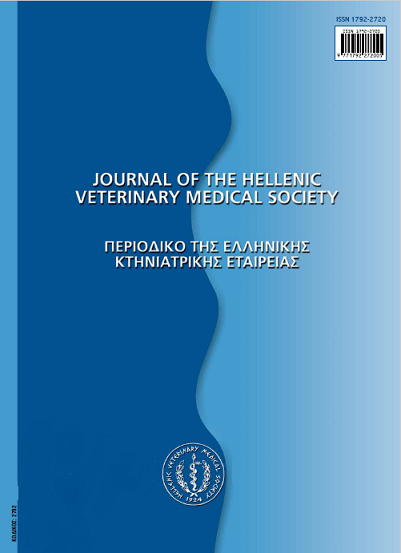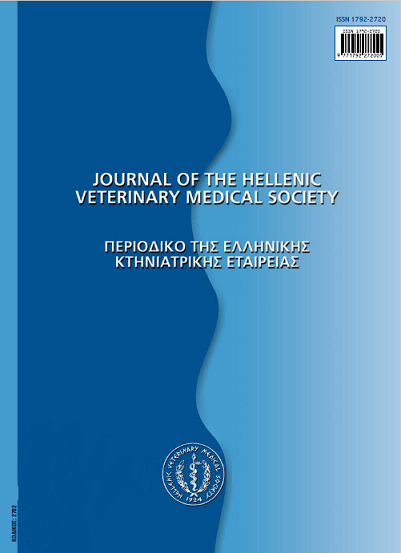Comparison of two ELISA methods for detection of antibodies against Footand- Mouth Disease virus of cattle breeds in Turkey
Аннотация
The study was conducted using two ELISA methods - the liquid phase blocking ELISA (LPBE) and solid phase competition ELISA (SPCE) for the detection of foot-and-mouth disease virus (FMDV) serotype A- and O-specific antibodies of different cattle breeds in Turkey. These methods were compared in 426 cattle previously vaccinated with oil-adjuvanted bivalent vaccine as well as in sera from 40 cattle with no history of foot-and-mouth disease infection or vaccination. The results were found that SPCE had a better specificity (serotype A; 100% and serotype O; 97.50%) than LPBE (serotype A 95.00% and serotype O 92.50%). Sensitivity of SPCE had also better values (serotype A; 99.30% and serotype O; 98.59%) than LPBE (serotype A; 97.89% and serotype O; 96.48%). The results of the present study showed that the SPCE method is more reliable than LPBE.
Article Details
- Как цитировать
-
INCE, Ö. B., KALKAN, R., & ÇAKIR, S. (2018). Comparison of two ELISA methods for detection of antibodies against Footand- Mouth Disease virus of cattle breeds in Turkey. Journal of the Hellenic Veterinary Medical Society, 67(1), 33–38. https://doi.org/10.12681/jhvms.15621
- Выпуск
- Том 67 № 1 (2016)
- Раздел
- Research Articles

Это произведение доступно по лицензии Creative Commons «Attribution-NonCommercial» («Атрибуция — Некоммерческое использование») 4.0 Всемирная.
Authors who publish with this journal agree to the following terms:
· Authors retain copyright and grant the journal right of first publication with the work simultaneously licensed under a Creative Commons Attribution Non-Commercial License that allows others to share the work with an acknowledgement of the work's authorship and initial publication in this journal.
· Authors are able to enter into separate, additional contractual arrangements for the non-exclusive distribution of the journal's published version of the work (e.g. post it to an institutional repository or publish it in a book), with an acknowledgement of its initial publication in this journal.
· Authors are permitted and encouraged to post their work online (preferably in institutional repositories or on their website) prior to and during the submission process, as it can lead to productive exchanges, as well as earlier and greater citation of published work.




